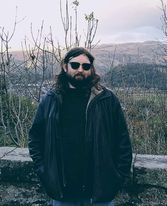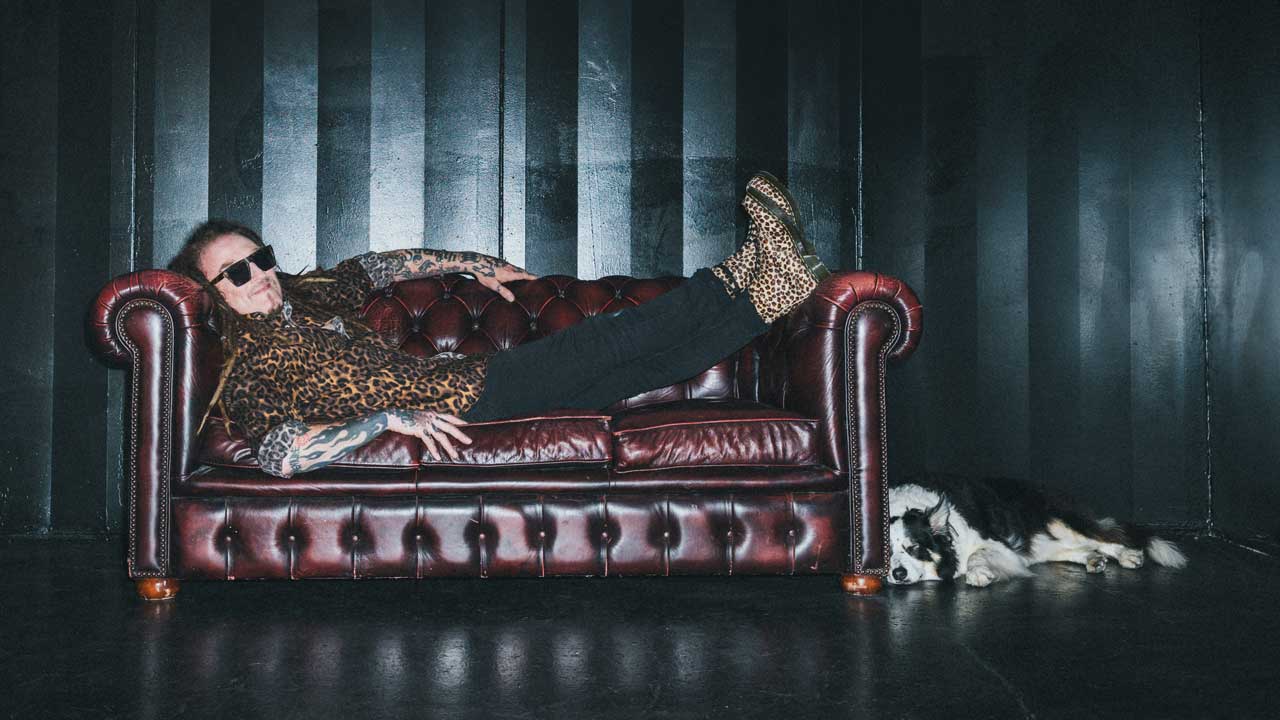Peter Steele: the life and death of the Godfather Of Goth Metal
Type O Negative frontman Peter Steele lived a life like no one else. This is the story of a giant of the 90s metal scene
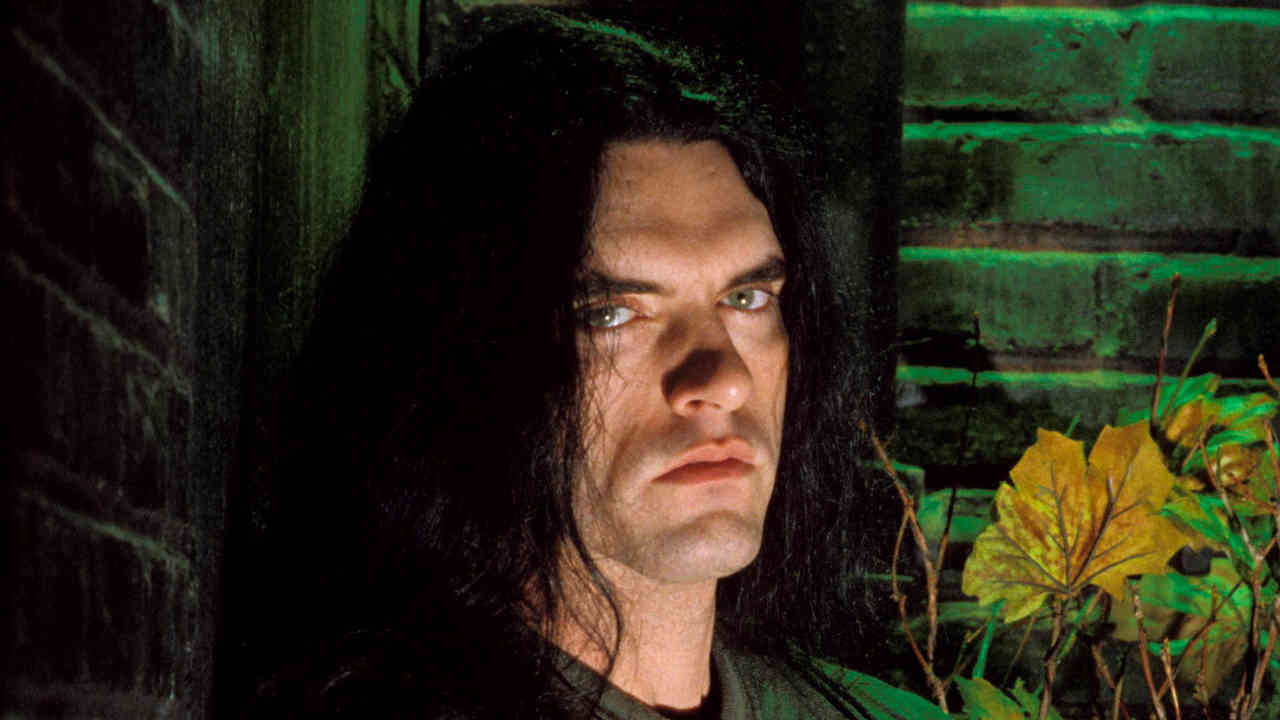
On April 14, 2010, the world finally came down. Peter Steele, frontman of goth-metal icons Type O Negative, was declared dead from heart failure. It was a bitter sting of irony almost befitting the band’s pitch-black humour, considering Peter had spent the past 20 years singing about the wars and woes of that very same organ.
Born Peter Thomas Ratajczyk in the Red Hook neighbourhood of Brooklyn in 1962, Steele’s musical career began in 1979 with the formation of Fallout. Though not his first band – having already played in garage-band projects such as Hot Ice and Northern Lights – Fallout’s thundering proto-thrash laid the DNA for his harder projects, while also putting him alongside two musicians who would shape his later success: Josh Silver (future Type O Negative keyboardist) and Louie Beateaux (future Carnivore drummer, later re-christened ‘Beato’).
At that point New York City was in a state of flux; Ramones had kickstarted the first wave of US punk just three years earlier (a wave that would continue to spread across the nation until it broke on the West Coast and came back as the equally colossal tidal wave of hardcore), but the city itself was already growing tired of the heavier music from the past decade.
“Disco had taken over,” recalls Richard Termini, a friend of Peter’s and producer of Fallout’s only surviving singles (Batteries Not Included/Rock Hard). “Heavier bands and those that were progressive were seen as dinosaurs, but Peter had this incredible imagination for imagery, while [guitarist and fellow songwriter] John Campos was a lot more sensitive. Together it was a Dave Gilmour/Roger Waters thing.”
This duality split the band in two; Josh and John started the new wave-influenced Original Sin, while Louie and Peter made their first dents on the metal world as Carnivore. Dialling up the heaviness and incorporating elements of the city’s nascent hardcore/thrash scenes, Carnivore were a B-movie made flesh, Peter exercising his imagination with songs about thermo-nuclear war, cannibalism and post-apocalyptic warfare. The band supplemented such visions with a roaring live show, earning local legend status with frequent shows at L’Amour, a metal/punk club beloved by Brooklynites – including Life of Agony’s Joey Zampella. “[LOA bassist] Alan Robert and I got absolutely massacred in the pit at a Carnivore L’Amour show,” Joey cackles. “In fact, one of Life of Agony’s first big shows was Negative Night Two with Carnivore, Biohazard and Sheer Terror – it was such a big deal for us.”
As with most local scenes, 80s/90s Brooklyn was a somewhat incestuous entity, members of various bands intermingling and connecting along the road – which is how Louie Beato eventually came to tutor his successor. “Louie and Peter lived just up the neighbourhood from me,” remembers Type O Negative founding member Sal Abruscato. “I was apprenticing at this Latino blacksmith shop that made cowbells they’d sell to lots of big Latin American musical stars. Before I started, Louie and Peter worked there too, so the boss suggested I go to Louie to take drum lessons and we became buddies.”
Even in the glory days of 80s music industry excess, a hardcore/thrash crossover band had their work cut out if they wanted to succeed, and Carnivore’s lack of touring ensured they’d never pull in big bucks. “When Carnivore eventually broke up, the guys got regular jobs,” Richard Termini says. “Peter was working at the Parks Department and Louie became a bus driver. Peter was happy doing that – he was still making music, but he wasn’t so interested in becoming a star.”
Sign up below to get the latest from Metal Hammer, plus exclusive special offers, direct to your inbox!
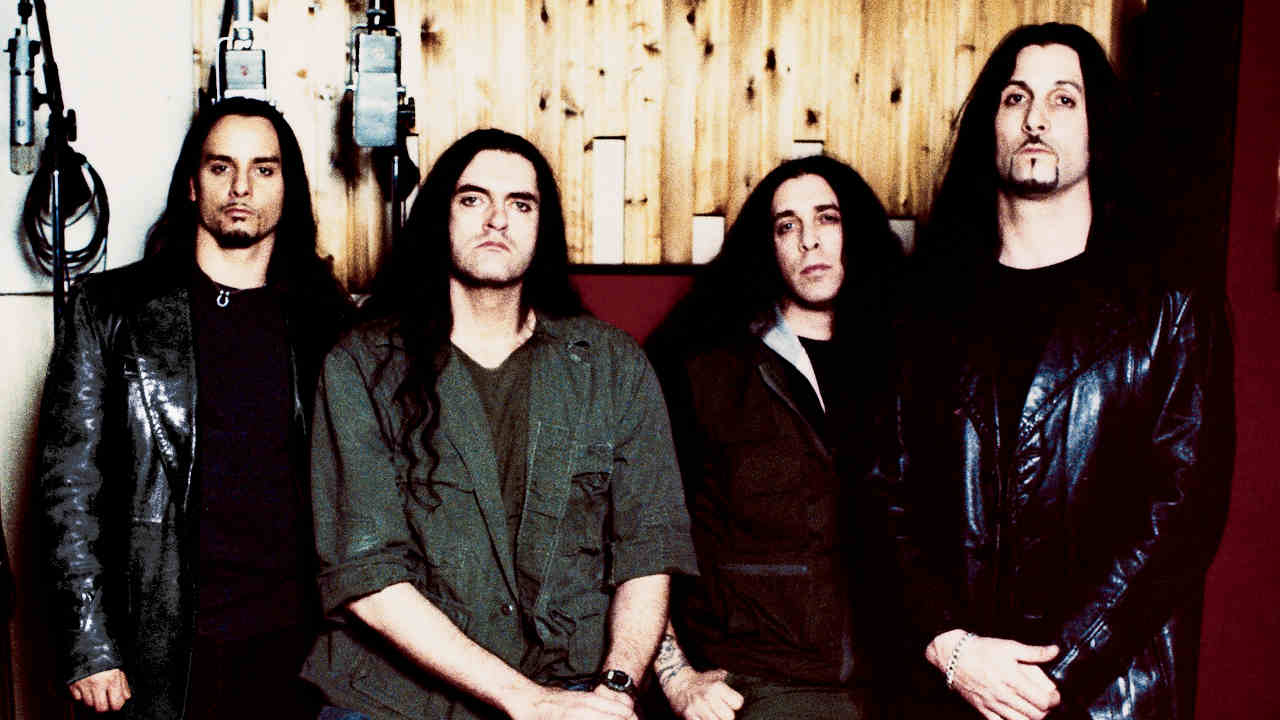
Peter may not have wanted to be a star, but fate had other plans in mind and it wasn’t long before it came knocking (literally). “I heard the news [about the break-up] and figured I’d go over unannounced and see how he was doing,” says Sal. “His father answered the door and let me down, and there’s Peter sitting in bed watching TV, having just cut all his hair off! He had just took the New York Police Department test; he didn’t want to play music anymore. I asked if he wanted to hang out and jam, have some fun. He nods, saying he’s always wanted to have a band with electronica – keyboards, samples and things like that. I’m like, ‘Yeah, cool man!’ just saying anything so I could play with the guy!”
This spur-of-the-moment decision set in motion the formation of one of the 90s’ most distinctive and successful metal bands. Reconnecting with ex-Fallout bandmate Josh Silver on keyboards and pulling in Kenny Hickey on guitars, the then-unnamed band gathered at Brooklyn’s Marine Park for their first official band meeting.
Cycling through names such as Subzero and New Minority, they decided on the name Repulsion for their first demo – material that would later be remastered into Type O Negative’s debut release Slow, Deep And Hard after one final rebrand. That first release is a furious, bilious entity that locks horns with love, infidelity and violence. But, where Carnivore drew from Peter’s imagination, these new songs were about Peter’s own recent experiences. “That record was about his ex-girlfriend at the time,” Sal says. “The scenario from Kill You Tonight literally happened to him – he took the D-train to Brighton Beach and caught her screwing on the sand!”
Ties to hardcore weren’t the only thing that Peter retained from the Carnivore days – he was still locked into a contract with his former label, Roadrunner. “At the time Roadrunner was a tiny little label, and Peter wanted out,” explains Monte Conner, the A&R rep who ended up bringing Type O Negative back into the Roadrunner fold. “He wasn’t happy with how those two Carnivore records were handled, and the owner of the label came to me with the Repulsion demo and asked what I wanted to do with it – should we let him go, or bring it in to Roadrunner? I thought it was amazing, and we’d have been nuts to let him go!”
Even with Monte working directly with the band, it didn’t stop the legend that the band put out the ‘live’ record The Origin Of The Feces – essentially just their debut rerecorded with crowd sounds – as a ‘fuck you’ to the label.
“We knew!” laughs Monte. “Peter was never happy with anything he did – within days of turning something in he’d want to make changes. Origin… was just Peter’s way of re-doing Slow, Deep And Hard to his liking.”
The same, irrepressible creative energies that seemed to fuel Peter to constantly tweak material also allowed Type O Negative to completely transform themselves. “The move into [1993’s] Bloody Kisses made a lot of sense,” explains Sal. “We’d hang out on weekends and go into New York at the height of its club phase, and Peter went in on the whole jet-black hair thing. The next record took on influences of that scene – songs like Black No.1 were about the people we’d see. It was great because we knew we couldn’t just keep playing the heavy-heavy stuff forever.”
The result was an enormous shift in tone and style, upping the band’s more gothic elements and leaning into their newfound doom-adjacent sound, while also incorporating 60s psychedelia and pop for a diverse, twisted dreamscape. If the stylistic change shocked Roadrunner at all, it certainly didn’t concern them. “The minute we heard the demo it was obvious the band had become extremely unique,” Monte says. “Songs like Christian Woman and Black No.1 stood out as obvious singles – even in demo form.”
Even with label backing and support, Bloody Kisses was by no means an overnight success, and not long after its release, Sal decided to leave the band. “We got blinded with some drama at that time, and I ended up quitting the band right when the record was coming out,” he says. “It just didn’t seem like things were going to work, or that we were going to tour.”

The forecast looked grim – Josh even sent pizzas to Roadrunner’s offices as a way of breaking the news lightly that it looked like the band were through. And then – somewhat ironically – tour offers started pouring in. Kenny’s ex-bandmate Johnny Kelly was brought into the fold to fill the vacant drum stool, receiving one pearl of wisdom on joining: “Don’t quit your day job!” he laughs.
“When our manager asked if I could get time off to tour, it was a surprise. We ended up playing for six weeks in the States, playing clubs, and then went back to our jobs. It wasn’t long before we got the call saying Nine Inch Nails wanted us to tour with them, then the same thing happened with Mötley Crüe and we were doing it all over again. We ended up quitting our jobs, but even at that point we weren’t expecting to make a career out of it!”
Touring alongside some of the biggest metal bands on the planet was just the boost in profile Type O needed, and on November 9, 1995, Bloody Kisses was certified gold by the RIAA – the first such award in Roadrunner’s history. “We had no idea just how successful that record was going to be and how it would affect people around the world,” Sal explains. “Even after we’re all gone, it feels like people will still listen to these albums. We were guys who just loved The Beatles – they had a massive effect on Type O Negative and to me Bloody Kisses was the White Album of the 90s.”
Follow-up October Rust doubled down on the gothic/doom elements that had made Bloody Kisses so successful, while also introducing just enough new wave to finally make full use of Josh Silver’s keyboards. “October Rust caught Peter at his most prepared,” Johnny says. “It surprised me, because we’d been on the road so much. It never worked like that again; after that, it’d take six months just to think about getting together.”
Far from being buoyed by two successful records back to back, things had started to go sour in Peter’s personal life as work started on the next release. Infamously difficult, World Coming Down took Type O in a more thunderously doomy direction, whilst also bearing Peter’s most candid lyrics to date. “Peter’s personal life bled into that record,” Johnny says. “Peter wasn’t in top form – drugs had started to get in the way of things. It’s so powerful, but also very depressing. Even worse, he really didn’t want to play those songs live. Like, ‘Why do I want to be reminded of this again?!’”
Luckily, the darkness didn’t last, and was almost nowhere to be seen on the band’s next release, 2003’s Life Is Killing Me. “Josh brought in some demos for Life Is Killing Me” remembers Max Ross, one of the ‘enginucers’ at Systems Two studios at the time. “I’d never worked with a band like Type O, but the guys were a blast and it was constant jokes. People would send packages and flowers in constantly; this girl came round every day and would hang around just praying and kissing the door!”
All styles and subgenres of their sound to that point were revisited, but crucially so too was the band’s caustic humour. “Everything in Type O was like a sarcastic comedy,” Johnny says. “Unfortunately, a lot of people missed that! But that’s why I absolutely loved the band on that first record – I thought it was hysterical, this guy going through absolute agony and deciding to put doo-wop vocals to his feelings!”
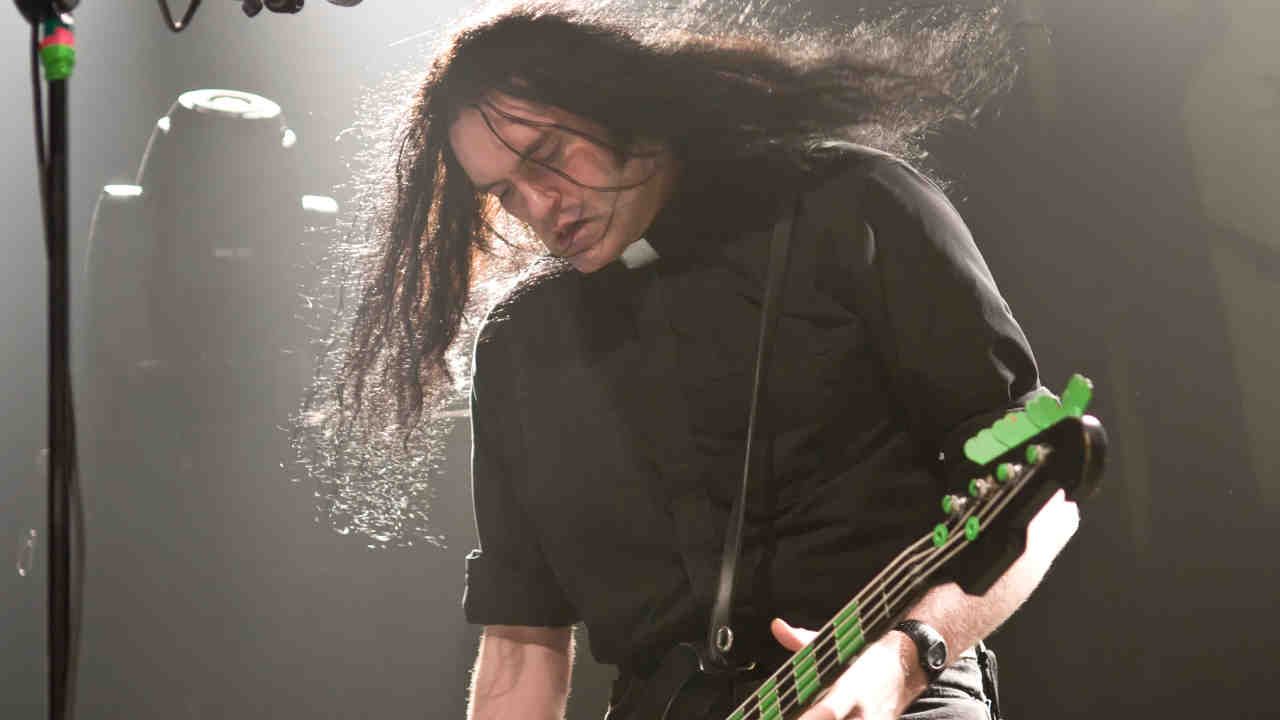
Unfortunately, Life Is Killing Me was doomed from the start – a fact mirrored in its original title, The Dream Is Dead. “Roadrunner was becoming a different record company by that point and Type O weren’t the big fish in the pond anymore,” Johnny admits. “I know I for one was disappointed in how the World Coming Down record had been handled, but even with that they tried to persuade us to sign another deal by telling us if we did, they’d push this record. It was like, ‘Well, why don’t you push this record first and then we’ll talk?’”
Type O Negative’s relationship with Roadrunner had run its course, but the break-up wasn’t acrimonious enough to sever ties completely. Despite officially signing to SPV Records in June 2004, Peter, Johnny and Josh still found time to contribute to the landmark Roadrunner United project in 2005 (an all-star album organised by their old A&R Rep, Monte Conner).
While Peter celebrated with his musical family, his personal life took a downward spiral. In 2005, he spent a short stint in New York prison complex Rikers Island, for assaulting a man (“Over a woman of course,” he told Hammer’s Alexander Milas in 2007). But the worst was yet to come when his mother passed away in 2006 – something he had fretted about while serving time. “Every time I’d speak to my mother I never knew if I was going to speak to her again,” he told Alex Zander of MK Ultra Magazine. “That was a real jail sentence for me.”
Recognising how bad things had got prompted a period of soul-searching and reflection for Peter. It also prompted him to revisit some of his past output, leading to the resurrection of Carnivore with an all-new line-up, including Life Of Agony’s Joey Z on guitars. Spots were booked at European festivals and, despite being a local sensation the first time round, Carnivore finally went international. “That tour was nuts!” Joey exclaims. I remember we played Wacken; we stepped out onto the stage and Peter plays a couple chords and just goes, ‘Thank you, goodnight!’ and walks offstage. We were offstage for about 10 minutes, then came back and did the exact same thing again! But this time went into a song – they just went crazy.”
Returning to his past also seemed to force Peter to address some of the demons he’d struggled with throughout his life, kickstarting a reflective period that set some major life changes in motion towards the end of the 00s. “One time in Germany Peter had a real rough night,” Joey says. “The next day he was just broken – he wanted to talk, alone in a room. He spilled his guts to tears, talking about how he hadn’t had the opportunity to have a family or children. He had his arm around me, told me he loved me and that I was his angel. I’ll never forget that connection.”
Type O’s final record – 2007’s Dead Again – saw more of a return to the hardcore fury of the band’s debut as a result of Peter’s time returning to Carnivore, but also due to extensive writing sessions at a studio in Rockaway (the same Queens peninsula that inspired Ramones’ ‘Rockaway Beach). Sadly it got reclaimed by the sea during [2012’s] superstorm Sandy,” says Johnny. “We’d go there five, six nights a week for, like, four to six months, working in the studio on new ideas and spent a lot of time jamming, which I think came across on the record.”
Even with its longer run-times and decidedly more metallic bent, Dead Again became Type O’s highest-charting album on release in the US, climbing to No.27 on the Billboard 200. “We’d been together for so long, but we weren’t just slapping some shit together to head back out on the road!” Johnny says.
Type O’s final tour started in New Jersey on October 16, 2009, with their last-ever show falling on a date so perfect it borders on ridiculous. “Our final show was at Harpos in Detroit on Halloween,” Johnny says.
“After the show we drove straight back to New York on the bus. Kenny and I had our wives there and we just stayed up late hanging out, singing Elton John songs along the highway – nobody knew it was the last show we’d ever play. At that point, we’d got past the feeling of a tour ending and thinking the band was gonna break up; we thought Peter was going to be like Lemmy and do it until we physically couldn’t.”
Seemingly in a healthier and happier place than he’d been in years, Peter had set about reconnecting with friends and bandmates of the past as 2009 drew to a close, sharing old stories, rebuilding relationships and expressing excitement in new ideas. This also meant that news of Peter’s death came as an enormous shock. “There was a lot of discussion of the past that let us get over things,” Sal says. “Then, all of a sudden he was gone. That’s how the universe plays things – it takes away some of the most talented people on the planet and we can never replace them.”
Peter Steele was a complicated, flawed human being. Ill-advised comments throughout his life gave his critics plenty of fuel so far as accusations of misogyny, homophobia and racism went. Songs like Der Untermensch and I Like Goils further complicate the matter, the oft-cited defence of a caustic sense of humour paper thin, at best painting the band as painfully naïve edgelords.
Over a decade on from his death, its impossible to know if Peter would have acknowledged or recanted his past comments. He is remembered by friends as a compassionate, if at times contradictory figure.
"Peter would sometimes be out of his mind and call you at like 2 in the morning," Johnny recalls. "One time he wanted to fight me, ‘I gotta problem with you, meet me on the street!’ so it was like ‘oh, okay… I’ll meet you; if I’m late, start without me’ haha. After he got sober we’d have these long conversations about life stuff – he was living in Pennsylvania on his own and looking after himself, telling me about things he was doing like getting a car or apartment or whatever."
On announcement of his death, tributes poured in from some of the biggest figures in the metal scene, including Henry Rollins, Tony Iommi and Jamey Jasta, while his iconoclastic approach influenced a new generation of metal bands including Code Orange, Chelsea Wolfe and Oceans Of Slumber.
Type O Negative transcended scenes and subgenres, deftly mixing goth, hardcore and doom metal culture in a way no band before – or since – has matched, taking four guys from Brooklyn and turning them into one of the most iconic metal groups of the 90s. “It felt more like surviving than creating a legacy!” laughs Johnny. “But here we are, 2020, and people still talk about the band.”
“It’s crazy to think this all stated with me knocking on Peter’s door,” Sal adds. “People are talking now about that first Black Sabbath record again for its 50th anniversary; kids who’ve never heard a note of that music are going to be checking it out. I don’t see any reason why that wouldn’t happen for Type O too, you know?”
Staff writer for Metal Hammer, Rich has never met a feature he didn't fancy, which is just as well when it comes to covering everything rock, punk and metal for both print and online, be it legendary events like Rock In Rio or Clash Of The Titans or seeking out exciting new bands like Nine Treasures, Jinjer and Sleep Token.
